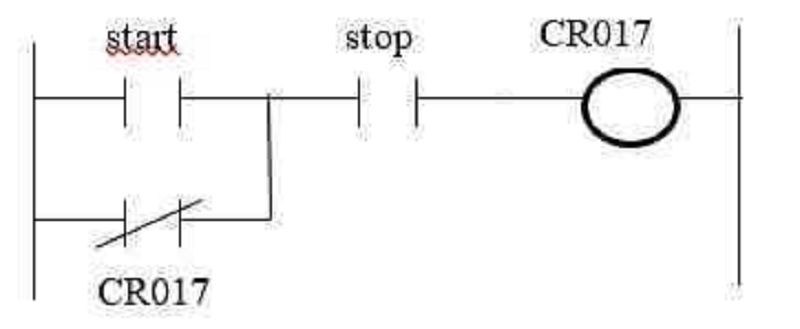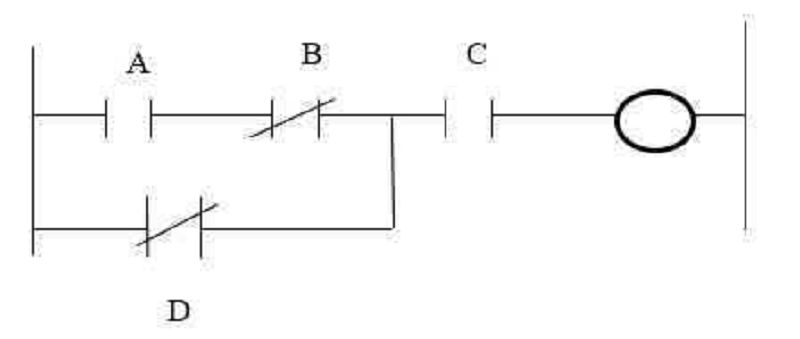Academiz-3rd Year

PLC and Circuit Analysis Quiz
Test your knowledge of Programmable Logic Controllers (PLC) and circuit analysis with our comprehensive quiz designed for third-year students. This quiz covers key concepts, applications, and technical details that are essential for mastering the subject.
Prepare to challenge yourself with questions such as:
- First PLC evolution and market value
- Understanding output modules and Boolean expressions
- Types of circuit breakers and their operations
1) First PLC was evolved in?
A. late 1980s
B. early 1975s
C. late 1960s
D. early 1980s
2) What is the market value of PLCs in 1990?
A. 80 million dollars/year
B. 1 billion dollars/year
C. 60 million dollars/year
D. 2 billion dollars/year
3) In PLC a 2 ampere output module can turn on which of the following device?
A. Output device of 2.5 amperes
B. Output device of 2 amperes
C. Output device of 6 amperes
D. All of the above
4) In a PLC, the scan time refers to the amount of time in which…
A. The technician enters the program
B. When Timers and counters are indexed
C. One “rung” of ladder logic takes to complete
D. The entire program takes to execute
E. Transmitted data communications must finish

5) Identify the problem in this motor control PLC program?
A. Coil
B. Start contact
C. Stop contact
D. Seal in contact

6) Give Boolean expression of the following group?
A. ABC+D
B. C+(A+B)D
C. C(AB+D)
D. C+D(A+B)
7) Which of the following are input on/off devices?
A. Float Switches
B. Photoelectric Systems
C. Both a &b
D. Electrical solenoid
8) A good application for a timed interrupt in a PLC program would be?
A. A communications function block
B. A PID function block
C. A motor start/stop rung
D. A “watchdog” timer
9) When does MCR function is enabled?
A. Input is on
B. Input is off
C. Both
D. None
10) In PLC programming, a retentive function is one that?
A. Defaults to on state
B. Defaults to off state
C. Is reset after each power cycle
D. Comes last in the program
11) On which of the following routine tests are conducted?
A. Oil circuit breakers
B. Air blast circuit breakers
C. Minimum oil circuit breakers
D. All of the above
12) The arcing contacts in a circuit breaker are made of?
A. Copper tungsten alloy
B. Porcelain
C. Electrolyte Copper
D. Aluminium alloy
13) A protective device, which reduces the steepness of wavefront of a surge by absorbing surge energy is called
A. Surge diverters
B. Surge absorber
C. Switching surges
D. Earthing screen
14) Circuit breakers usually operate under
A. Steady short circuit current
B. Sub transient state short circuit current
C. Transient state of short circuit current
D. None of these
15) What is the maximum restriking voltage?
A. 2Vm
B. Vm/2
C. VmWn
D. Vm
16) What is the purpose of back up protection?
A. To increase the speed
B. To increase the reach
C. To guard against failure of primary
D. To leave no blind spot
17) Which relay can anticipate or prevent the occurrence of fault?
A. Induction relay
B. Direction relay
C. Buchholz relay
D. All of the above
18) The tripping circuit is_____
A. Ac
B. Dc
C. Either Ac or Dc
D. None of these
19) Plug Setting of a electromagnetic relay can be altered by varying?
A. Number of ampere turns
B. Air gap of magnetic path
C. Adjustable back stop
D. None of these
20) The most efficient torque producing actuating structure for the induction type relays is?
A. Shaded pole structure
B. Watt hour meter structure
C. Induction cup structure
D. Single induction loop structure
21) When BHE=1 and Ao=0 which of the following are true?
A. High order bank accessed from odd address for byte read/write
B. Both high order and low order banks are accessed for word read/write
C. Low order bank accessed from even address for byte read/write
D. None
22) The instruction, MOV AX, 0005H belongs to the address mode
A. Register
B. Direct
C. Immediate
D. Register relative
23) If the data is present in a register and it is referred using the particular register, then it is
A. Direct addressing mode
B. Register addressing mode
C. Indexed addressing mode
D. Immediate addressing mode
24) Example of an External interrupt is?
A. Divide by zero interrupt
B. Keyboard interrupt
C. Overflow interrupt
D. Type2 interrupt
25) The interrupt request that is independent of IF flag is
A. NMI
B. TRAP
C. Divide by zero
D. All of the mentioned
26) 8051 series has how many 16 bit registers?
A. 2
B. 3
C. 1
D. 0
27) When micro controller executes some arithmetic operations, then flag bits of which register are affected?
A. PSW
B. SP
C. DPTR
D. PC
28) How many bytes of bit addressable memory is present in 8051 based micro controller?
A. 8 bytes
B. 32 bytes
C. 16 bytes
D. 128 bytes
29) Which out of four ports of 8051 needs external pull up resister for using it as input or output port?
A. Port 0
B. Port 1
C. Port 2
D. Port 3
30) In 8051 which Interrupt has highest priority
A. IE1
B. TFO
C. Reset
D. TF1
31) Consider the following 1.LPF method 2. EMF Method 3. ZPF method 4. MMF method Which of the above methods are correct for determination of voltage regulation of an alternator?
A. 1,2 & 3
B. 2,3 & 4
C. 2 & 3 only
D. 3 & 4 only
32) In salient pole synchronous machine where Xd=direct axis syn. Reactance and Xq=quadrature syn. Reactance then which of the following is true?
A. Xq=Xd
B. Xq>Xd
c. Xq<Xd
D. Xq=0
33) A salient pole synchronous machine has maximum power output when power angle is
A. 90 degrees
B. 45 degrees
C. Less than 90 degrees
D. More than 90 degrees
34) A synchronous machine connected to a power system grid bus bar is operating as a generator. To make the machine operate as a motor, the
A. Direction of rotation is to be reversed
B. Phase sequence is to be changed
C. Field excitation is to be decreased
D. Mechanical input is to be less than the losses at the shaft
35) Which of the following conditions are to be satisfied for proper synchronization of alternators 1.Equal terminal voltage 2.Same frequency 3.Same phase sequence 4.Same KVA rating 5. Same phase displacement select the option below?
A. 1,3 and 4 only
B. 1,2,4 and 5 only
C. 2,3,4, and 5 only
D. 1,2,3 and 5 only
36) Two alternators A and B are sharing an inductive load equally. If the excitation of alternator A is increased then?
A. Alternator B will deliver more current and alternator A will deliver less current
B. Alternator B will deliver less current and alternator A will deliver more current
C. Both will continue to share load equally
D. Both will deliver more current
37) In a synchronous generator , a divided winding rotor is preferable to a conventional winding rotor because of ?
A. Higher efficiency
B. Increased steady state stability
C. Higher short circuit ratio
D. Better damping
38) It is desirable to eliminate 5th harmonic voltage from the phase voltage of an alternator, the coils should be short pitched by an electrical angle of?
A. 30 degrees
B. 36 degrees
C. 18 degrees
D. None of these
39) What is the range of short circuit generator in high speed turbo alternator?
A. Between 0 and 0.5
B. Between 1 and 1.5
C. Between 0.5 and 0.75
D. Between 0.2 and 0.6
40) A bldc motor contains?
A. Field windings
B. Permanent magnet rotor
C. Both
D. None of these
41) Which of the following is not a discretized digital signal?
A. Image method of SONAR
B. Barcode
C. Digital image
D. Sesmograph’s plot
42) An anticipated signal has the following frequencies: 10,20, 30,40, 50Hz. The most suitable sampling frequency among the following might be:
A. 5hz
B. 20hz
C. 50hz
D. 110hz
43) An isolated village is self sustainable with respect to its elctrical energy demand. Unfortunately, the load dispatch centre is very ineffective in its job, so the power frequency of the bus and grid varies in he range[40Hz,60Hz], the rated being 50Hz. A young electrical engineer has come up with an innovative solution to the scenerio. He has designed a system, which monitors the speed of a 3 phase synchronous generator using a DIGITAL tachometer. The reading of the tachometer is fed abck to the steam valve of the steam turbine using some effective feedback mechanism. The synchrnous generator is a 4 pole machine, with the radius of shaft against which the tachometer's light(laser) falls is 10cm. Help the young Engineer place the order for the most optimal digital tachometer, in terms of frequency. Hint: Find the sampling frequency of the digital tachometer.?
A. 50hz
B. 100z
C. 60hz
D. 40hz
E. 120hz
F. 80hz
44) Which systems among the following have monotonic pass and stop band
A. Butterworth filter
B. Chebysev filter
C. u(n)
D. δ(n)
45) A public address system is to be designed using DSP. It is known that the quality of microphone is not very good and very frequently Johnson’s noise creeps into the analog output of the microphone. The input to the speaker is given after conditioning the signal using DSP. Which among the following sequence which when convoluted with the input signal best alternates the noise creeped in?
A. {1,1,1,1,1}
B. {1/5,1/5,1/5,1/5,1/5}
C. {0,0,0,0,0}
D. {0,0,1,0,0}
46) Two sequences x1(n) and x2(n) of lengths N1 and N2 are linearly convoluted using circular convolution.The length of resulting sequence is?
A. N1+N2
B. N1-N2+1
C. N1+N2-1
D. N1-N2
47) Which window among the following has narrowest main lobe?
A. Rectangular window
B. Bartlett window
C. Hanning Window
D. Haming Window
48) Given length of x(n) is 8. Find the length of DFT of x(n)?
A. 3
B. 7
C. 8
D. 16
49) Number of complex multiplications to be performed using normal computation of DFT of signal of length N?
A. N^2
B. N(N-1)
C. N
D. N-1
50) A system g(n) is given input x(n), which of the following would be the output of the system:
A. x(n)+g(n)
B. x(n)g(n)
C. x(n)*g(n)
D. mod(x(n))mod(g(n))
{"name":"Academiz-3rd Year", "url":"https://www.quiz-maker.com/QPREVIEW","txt":"Test your knowledge of Programmable Logic Controllers (PLC) and circuit analysis with our comprehensive quiz designed for third-year students. This quiz covers key concepts, applications, and technical details that are essential for mastering the subject.Prepare to challenge yourself with questions such as:First PLC evolution and market valueUnderstanding output modules and Boolean expressionsTypes of circuit breakers and their operations","img":"https:/images/course1.png"}
More Quizzes
PLC Group 2 Quiz
15824
Line capaticance
6364
Food Pyramid Quiz
520
Which Character Are You From The 3 Little Pigs
3247
Free Corporate IT Innovation Knowledge Test
201028774
Can You Ace the European Union Anthem Music?
201049801
Guess Countries' Independence Dates: Test Your Knowledge
201054684
Think You Know Lanthionization? Take Chemical Texture!
201029742
Take the Ultimate Classpect - Find Your Homestuck Role!
201028170
How Well Do You Know Deadman Wonderland Characters?
201050930
Test Your Knowledge: on Actors in Natural Born Killers
201047703
Fuller House: Which Tanner Sister Are You? Start Now
201023857